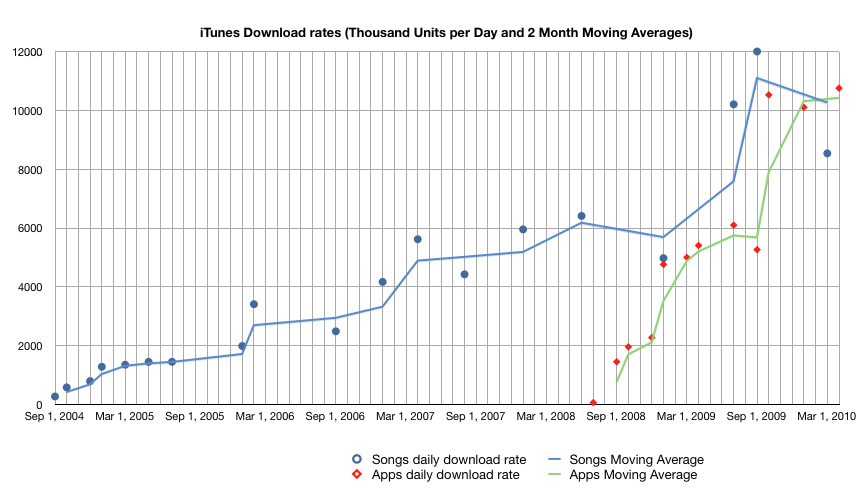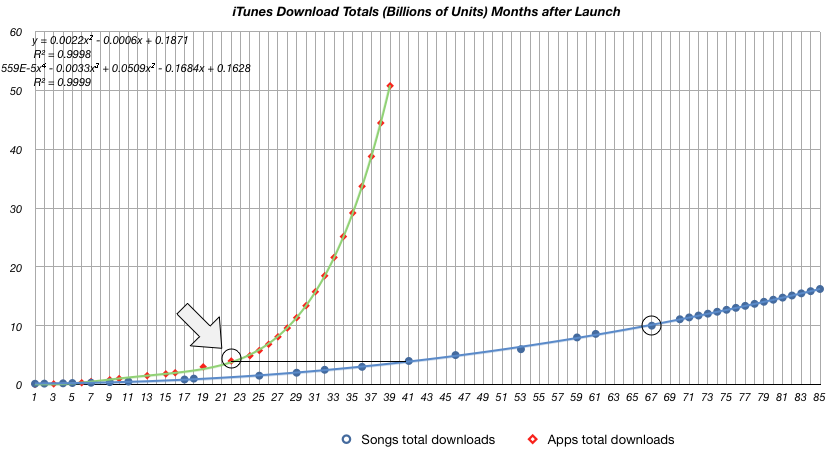The App download rate increased to a record 10,753,000 per day during the last 90 days. This remains below the peak reported iTunes music rate of 12 million per day in the fall of 2009, but above the more recent rate of 8.5 million per day reported in March.
The download rates for iTunes are reported to have fallen as tiered pricing has been introduced while App download rates continue to increase.



